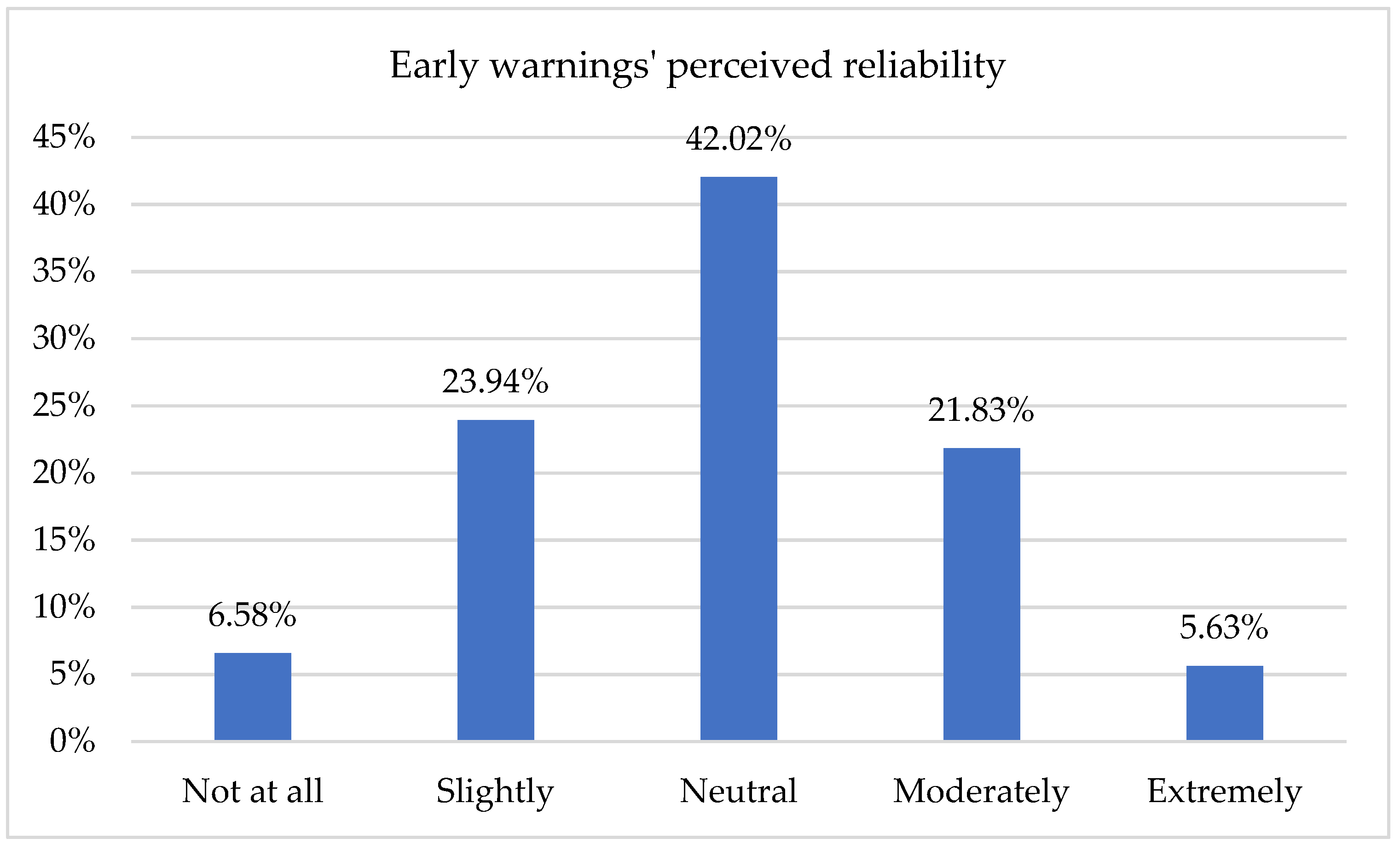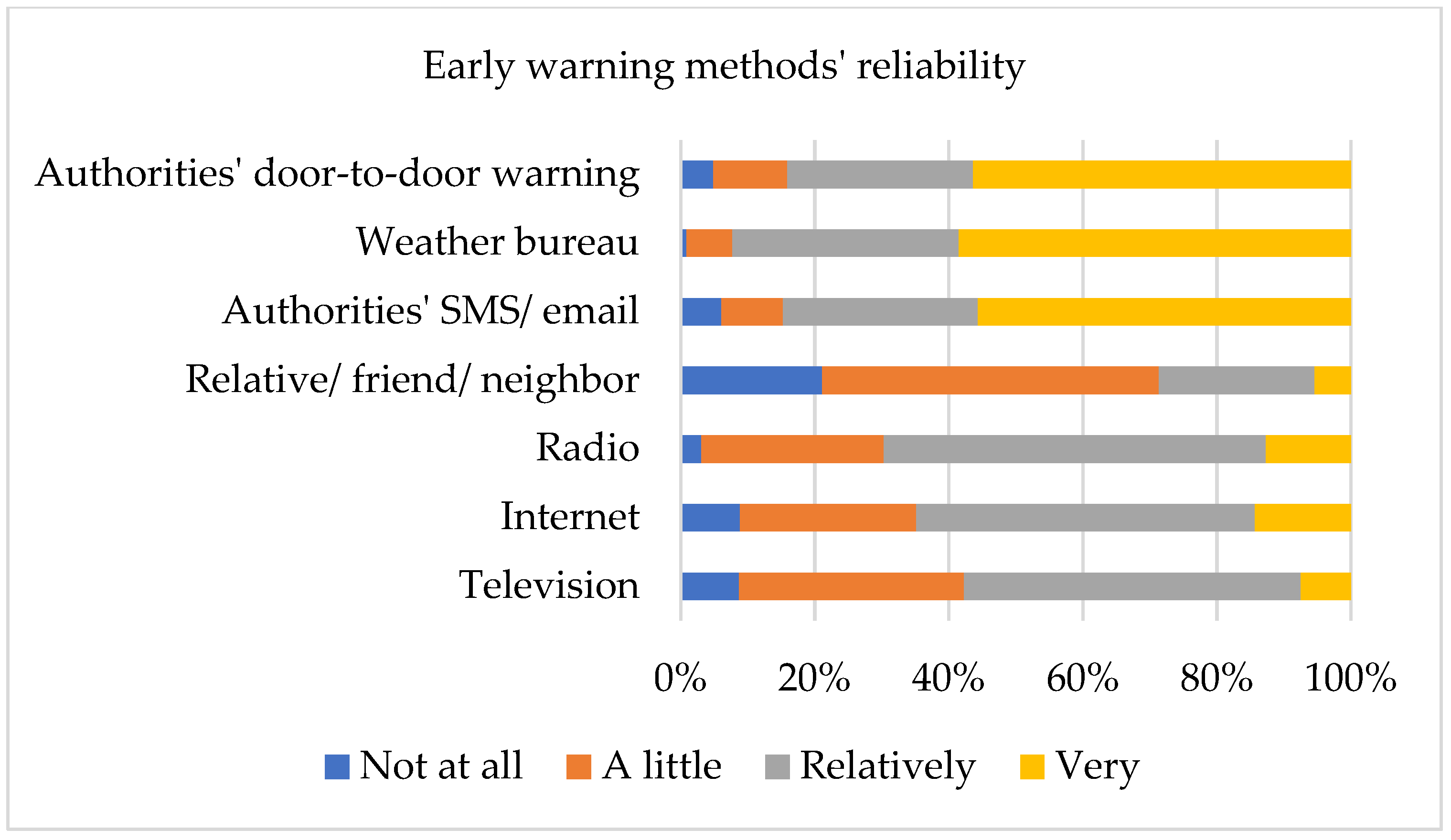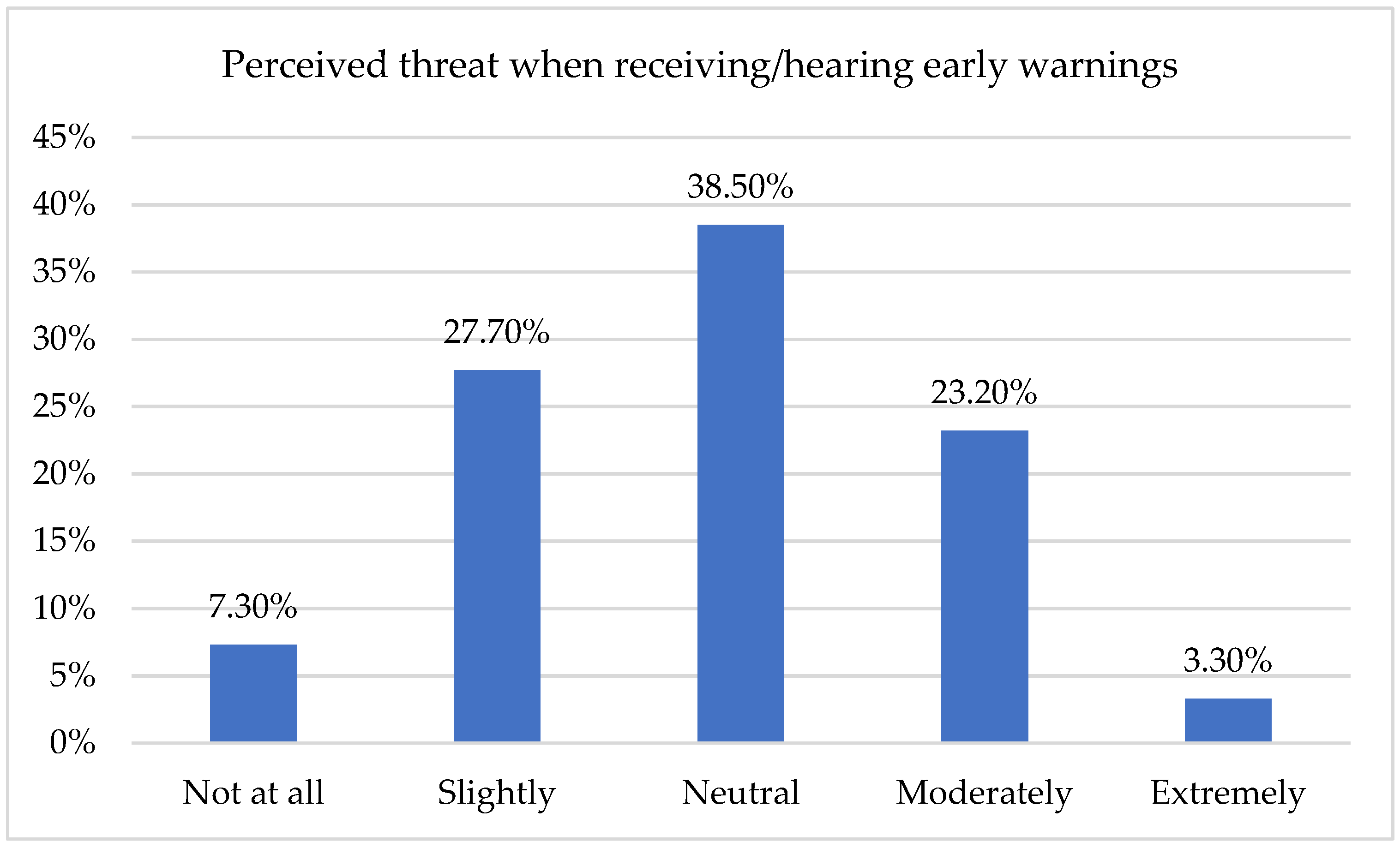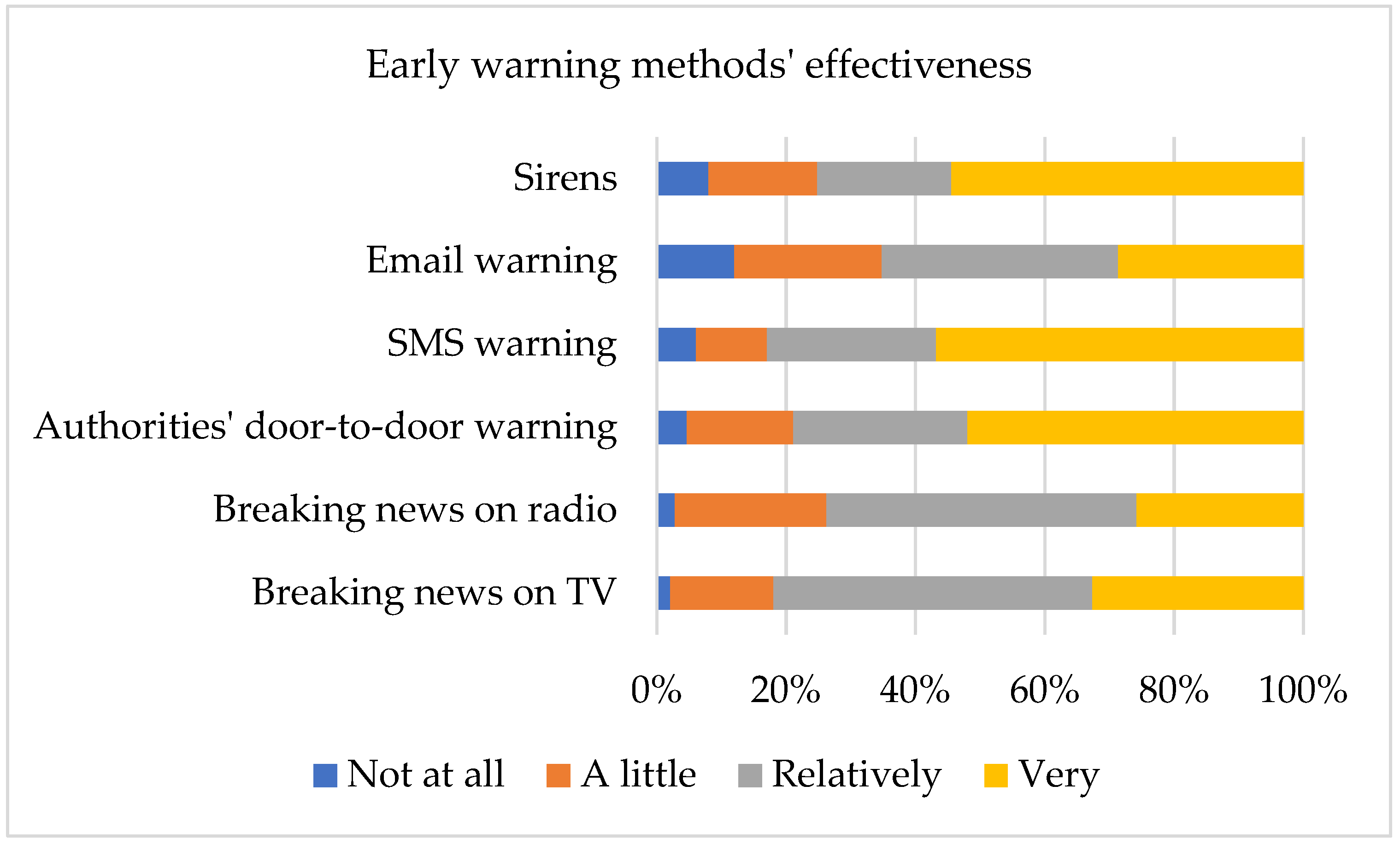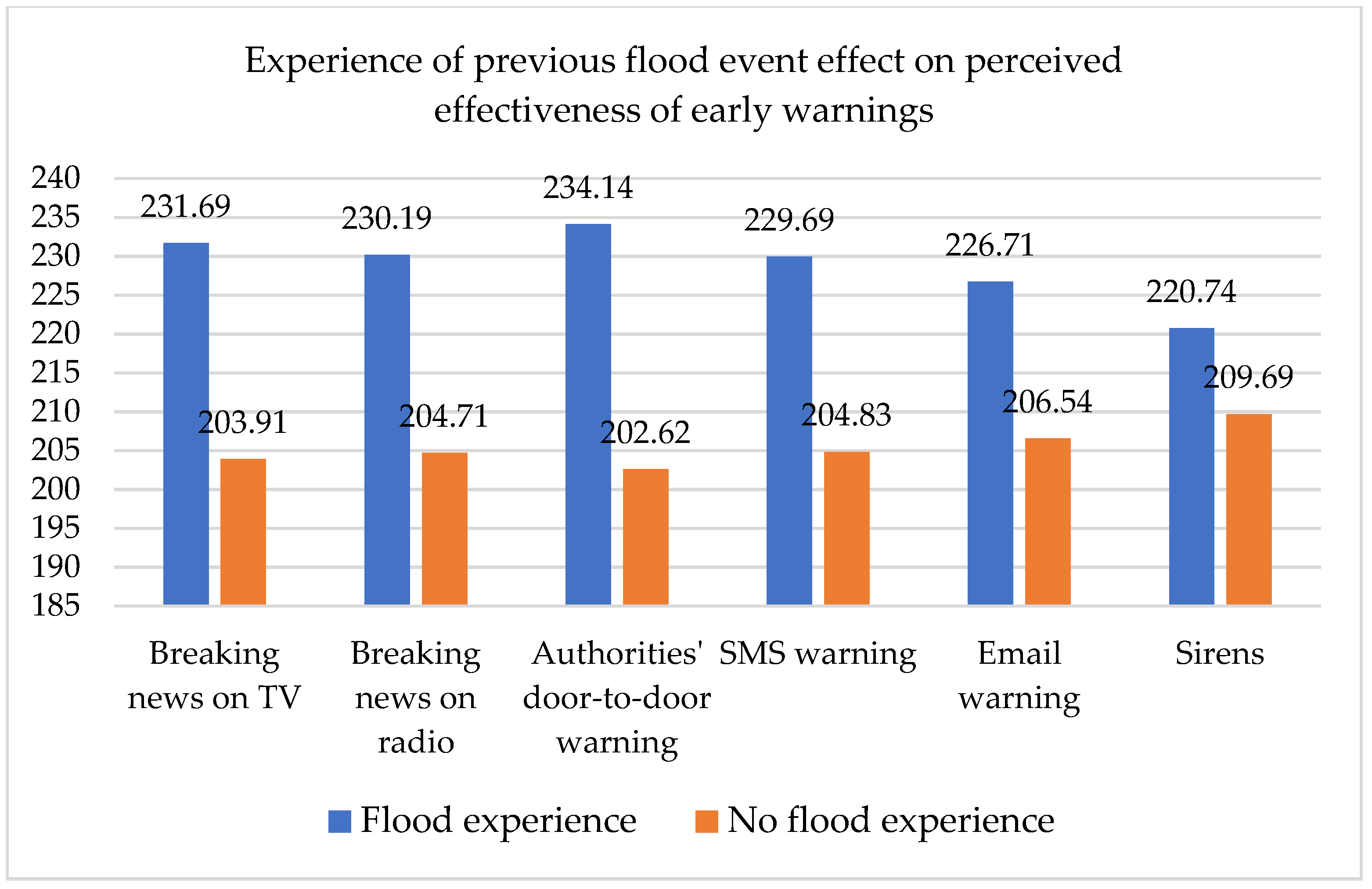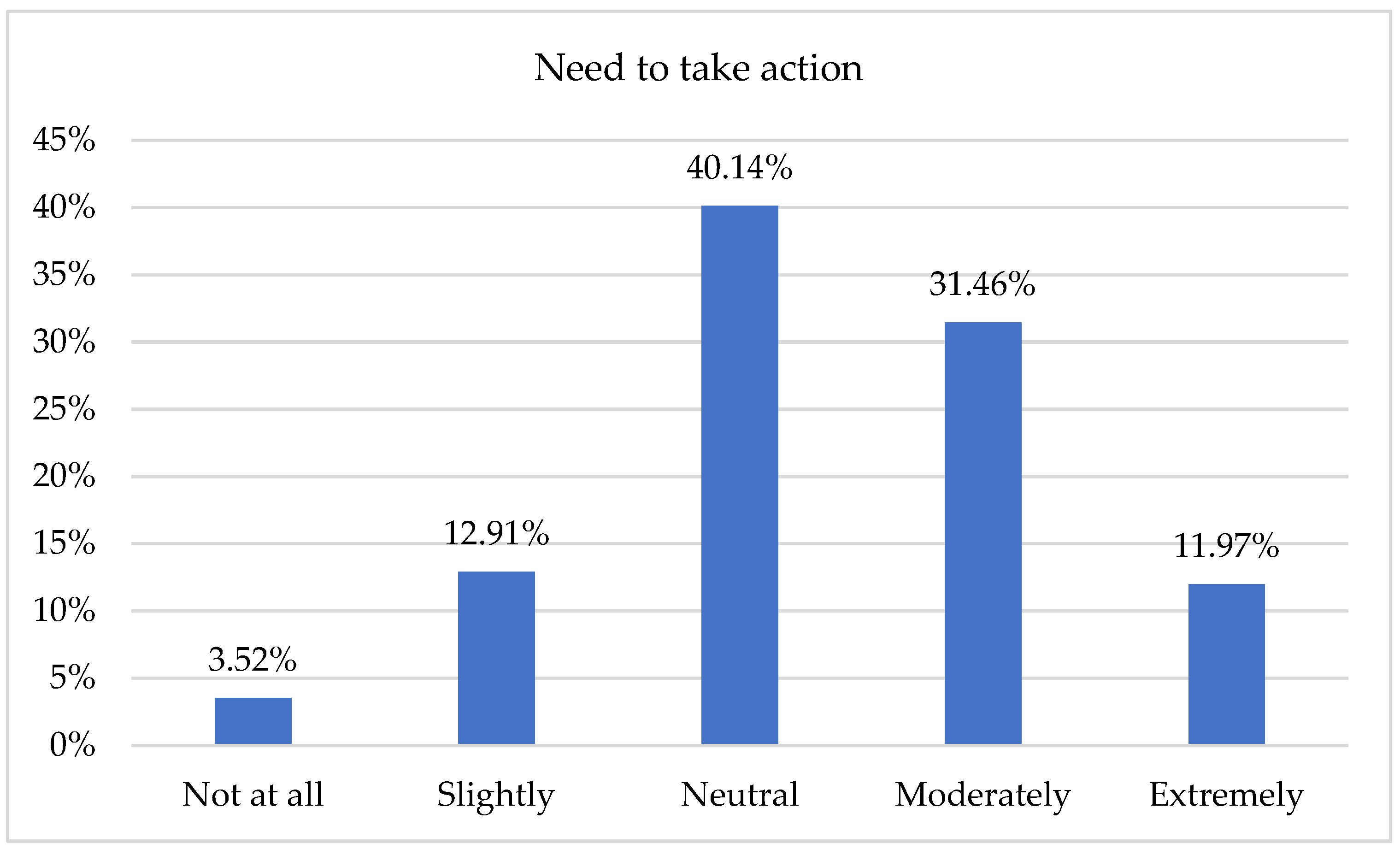1. Introduction
Despite the significant technological advances in flood forecasting, warning, and visualization in recent years [
1,
2,
3], as well as information reach [
4,
5,
6], floods remain one of the deadliest natural hazards [
7], even in parts of the world with sophisticated flood-risk prevention and warning measures [
8,
9].
Recent literature has provided strong evidence that a large portion of flood fatalities are related to underestimation or misjudgment of the risks of entering a flooded area [
10,
11,
12]. A portion of victims choose to come in contact with floodwaters voluntarily despite being in an initial position of safety and being aware of the flood, pursuing what the literature describes as a “risk-taking, dangerous, or inappropriate behavior” [
13,
14,
15,
16] leading to accidents that were probably avoidable [
17]. This is a strong indication that there is considerable room for improvement when it comes to preventing individuals from coming in contact with floodwaters and to the overall reduction of risk.
The above evidence also raises questions as to the efficiency and reach of flood and extreme weather warnings, including their reception and understanding by the general public. For example, previous works have shown that extreme weather and flood warnings can fail to trigger a reaction or elicit the desired behavior [
18], can be misinterpreted, or even fail to reach people [
5,
19].
In addition, deficiencies can happen when people fail to personalize the warnings [
18,
20], when individuals underestimate the risks [
21], or feel they are not able to take effective measures [
22,
23,
24]. Other factors have been shown to influence the effectiveness of warning communications directly or indirectly, including the level of trust in authorities [
25,
26,
27,
28], the source of information [
29], warning methods or media [
30], the message content and shaping [
31,
32], and the knowledge or relevant training of people who receive them [
33,
34] among other factors.
The literature has shown that the effectiveness of communication on various threats also depends on the reliability of the messages and authorities [
35]. Previous works have presented evidence showing that personal attributes of the warning receiver (i.e., demographic elements) [
36,
37] and the way individuals perceive the risk of floods and their knowledge have the potential to influence the way they receive warning messages [
38,
39,
40]. In addition there is strong evidence that past flood experiences affect risk perception [
41]. However, there is limited evidence on the role of past flood experiences and risk perception on how individuals perceive flood early warnings. In addition, there is limited understanding on whether or not demographics affect the views on the reliability and effectiveness of the messages.
Nevertheless, the perception that individuals have of the processes of early warnings issued by the authorities is a crucial part of their success. Even the most accurate warning has the potential to be ineffective if people choose to ignore it or do not trust its message. Despite its significance, the effectiveness of flood warning communication is poorly explored in parts of the world.
In the Eastern Mediterranean region, an area with a very rich record of catastrophic floods [
42] and sensitive to climate change-related threats [
43], studies on what influences the perception and views of the public on flood warnings are, to the best of our knowledge, very scarce. As a characteristic example of the region, Greece is a country that is often susceptible to catastrophic floods that on some occasions induce tragic life loss [
44] as authorities and the public face the challenge of the rapid onset of floodwaters.
Based on the lack of evidence highlighted above, especially in the Eastern Mediterranean region, the following research hypotheses can be drawn:
H1. Respondents’ demographics are correlated with early warnings’ perceived reliability and effectiveness.
H2. Respondents’ demographics are correlated with the degree to which people upon hearing a warning feel threatened by the expected extreme event.
H3. Respondents’ demographics are correlated with whether or not they feel they need to take action upon receiving a warning.
H4. Respondents’ past flood experience is correlated with warnings’ perceived reliability and effectiveness.
H5. Respondents’ past flood experience is correlated with the degree to which people upon hearing a warning feel threatened by the expected extreme event.
H6. Respondents’ past flood experience is correlated with whether or not they feel they need to take action upon receiving a warning.
H7. Respondents’ flood risk perception is correlated with warnings’ perceived reliability and effectiveness.
H8. Respondents’ flood risk perception is correlated with the degree to which people upon hearing a warning feel threatened by the expected extreme event.
H9. Respondents’ flood risk perception is correlated with whether they feel they need to take action upon receiving a warning.
H10. Respondents’ perceived knowledge is correlated with warnings’ perceived reliability and effectiveness.
H11. Respondents’ perceived knowledge is correlated with the degree to which people upon hearing a warning feel threatened by the expected extreme event.
H12. Respondents’ perceived knowledge is correlated with whether or not they feel they need to take action upon receiving a warning.
H13. Respondents’ perceived self-efficacy is correlated whether or not they feel they need to take action upon receiving a warning.
The scarcity of data on how laymen perceive extreme weather and flood warnings highlights the need to explore the field, especially in light of the possible impacts of climate change on extreme flood frequency. This work focuses on examining the perceptions of the general public on flood and extreme weather early warning processes in Greece, based on a questionnaire survey (for the questionnaire please see
Appendix A), as well as on exploring possible statistical correlations with personal attributes and views of the participants. The rest of the study is organized as follows. We present the research sample and the factors analyzed, followed by a detailed description of our data and the approach used. Then, we present and discuss the findings and their practical implications.
2. Data and Methodology
To measure and analyze public perceptions on flood and extreme weather early warnings in Greece, an empirical study was carried out, using a structured questionnaire as the main research tool. Sample size was estimated by using the following equation of simple random sampling with substitution [
45]:
In the above equation,
n refers to the total sample size,
p to the pre-study estimate of the proportion to be measured,
e to the accepted error and,
to the standard normal deviate which takes a standard value based on the significance level set [
45].
Thus, we primarily carried out a pilot study so as to estimate the percentage of people who have experienced a flood event in the past, because this is the variable of interest in our research. In the pilot study of 50 participants, we obtained that 40% of them have experienced a flood in the past. Thus, taking into consideration that the accepted error of our research is set at 5%, we use the following equation for the minimum acceptable sample size:
Alternatively, the appropriateness of the sample size is also confirmed by other sources of theory. More specifically, according to Saunders et al. [
46] the selected sample size is sufficient taking into account both the population of the country and the significance level of the research.
The questionnaire contained 16 questions and was distributed electronically by using a simple random sampling during the period between April 2021 and September 2021. As far as the random sampling is concerned, it was carried out on a national level by using email catalogues. To randomly select the sample, we numbered all the registered emails and, to ensure randomness, we have applied the RANDBETWEEN function of Microsoft Excel—Microsoft Office 2019 version, which produces the desired number of random registrations. This method is followed in other cases as well, and it is considered effective [
47,
48]. However, it should be noted that this process was run several times because not everyone responded to the invitations they received. Thus, a total of 9470 invitations were sent in order to obtain 427 valid responses, meaning a 4.5% response rate approximately.
The first part of the questionnaire contained questions about participants’ demographics and the experience of a flood event in the past. The second part of the questionnaire was dedicated to participants’ perceptions, views, and knowledge on extreme weather and flood early warnings, whereas the third part was dedicated to the actions taken upon receiving a warning. Most of the questions were based on a 5-point Likert scale where items were coded from 1, referring to “strongly disagree,” to 5, referring to “strongly agree”. Furthermore, there were dichotomous and multiple response variables.
All the research data were statistically analyzed with both descriptive and inductive statistics, including correlation coefficients and statistical hypotheses tests. It is noted that the significance level of the research is set at 5% at which all the statistical tests are run.
Initially, a reliability test was run, in order to measure the questionnaire’s internal consistency. The Cronbach’s alpha values of the following table reveal an acceptable level of reliability (
Table 1).
Furthermore, in order to remedy of non-response error, the method of Armstrong and Overton [
49] is used. As far as it is concerned, the first and the last 30 questionnaires were tested using the Mann–Whitney U test which did not reveal any statistically significant difference, meaning that the possibility of non-response error is low.
As far as the participants are concerned, their demographics are provided in the following table (
Table 2).
Concerning participants’ age, the mean value is equal to 37.16 years and the standard deviation is equal to 11.31 years meaning an almost equal distribution of the values. Lastly, it is found that the youngest participant is 19 years old, and the oldest one is 83 years old.
Given that official warnings in Greece do not differentiate between different types of floods, in the present survey we did not distinguish between these types, and we only used the generic terminology “flood” and “extreme weather” included in the official messages. It should be also noted that in Greece, according to the regulations, official flood and extreme weather warnings are issued by the Hellenic National Meteorological Service and the General Secretariat for Civil Protection. The warnings contain information on the location and timing of the expected phenomena, and they are usually announced by the majority of national or local media. At the same time, the warnings are sent to local authorities that upon receiving them are set in different levels of preparedness depending on the forecasted severity of the expected phenomena.
In addition, to confirm the representativeness of the sample through the abovementioned calculation of its size, the sample’s demographics are also compared with those of other surveys. It is found that the obtained results are close to the demographics of other papers concerning the case of Greece [
50] and at the same time close to the data provided by the Hellenic Statistical Authority [
51].
4. Discussion
This study focuses on exploring the views of the general public on the extreme weather and flood early warning processes in Greece, through a questionnaire survey, as well as the role of potential influencing factors. The work makes certain novel contributions to the literature given the lack of data on the Eastern Mediterranean region, but also records several statistically significant correlations affecting people’s perceptions on flood early warning that to the best of our knowledge had a limited literature presence until today.
With regard to the warnings’ perceived reliability, it was found that the participants were mostly balanced between positive, neutral, and negative views. The relatively small percentage (27.46%) that was found to consider the warnings “moderately” or “extremely” reliable is concerning, given the importance of this factor in defining the response of people who receive it [
40,
52]. When different warning sources are evaluated, participants tend to rate the reliability differently, in agreement with previous findings [
53], and assessing the official warnings issued by authorities as more reliable on average. This discrepancy found between official and unofficial warnings can be attributed to differences in the trustworthiness of the sources [
54] and is a pattern identified in previous works [
55]. It should be noted that responses to this question could be affected by social desirability bias [
56] as well, and therefore they should be considered with caution. Further research should be carried out to address this matter and further explore other factors of messaging in relation to the source, including perceived urgency and immediacy.
The perceived reliability was found to be correlated with the educational level (in line with previous findings [
57]) and the family status of participants. On the other hand, perceived effectiveness of warnings was found to be correlated with age and family status, thus confirming partly hypothesis H1. Parents tend to find the reliability increased, a trend that is probably attributed to a higher level of trust exhibited by this population group toward extreme weather and flood forecasting correlated by Diakakis et al. [
50]. In addition, it was found that perceived knowledge is correlated positively with both perceived warning reliability and perceived effectiveness, confirming hypothesis H10. Further, flood-risk perception was correlated positively, with perceived reliability and perceived effectiveness confirming hypothesis H7, a result that supports previous findings [
57].
No correlation was found between perceived reliability and previous flood experience, despite its significant role in flood-risk perception [
41,
58]. On the other hand, individuals’ past flood experience was found to be correlated with the effectiveness of warnings, and therefore hypothesis H4 is only partly confirmed.
With regard to the degree to which individuals feel threatened by the expected phenomena upon receiving/hearing a warning, the participants provided fairly balanced answers. Again, an important (and concerning) percentage (35%) (answering “slightly” and “not at all”) did not consider that receiving a flood warning denotes a threat to themselves, their loved ones and/or their property. In addition, it was found to be strongly connected with the perception of risk that participants had for floods, a finding that confirms hypothesis H8. In addition, it was found that perceived threat upon hearing warning was related also to gender and family status, with females and parents feeling more threatened. This last result is in line with previous conclusions of the relevant literature that finds females and parents exhibiting, in general, higher flood-risk perception and worry in comparison to males and non-parents respectively [
37,
41,
59]. Gender has been correlated in the previous studies with the importance of warnings and their sources as well [
60]. Age and educational level do not show any correlation with perceived threat and therefore hypothesis H2 is only partly confirmed, as only certain demographics are found to be correlated. Previous experiences with flood events and perceived knowledge of floods, did not show any correlation with the perceived threat of the warnings, thus rejecting hypotheses H5 and H11 respectively.
With regard to the degree to which the participants feel they need to take action upon receiving a warning, a strong statistical correlation was found with flood risk perception ratings and perceived knowledge of the participants confirming hypotheses H9 and H12 respectively. Past flood experience, marginally, did not show an correlation and thus hypothesis H6 is rejected (marginally). With respect to demographics, age and family status showed a statistically significant correlation, as older individuals and parents were also found to feel to a higher degree that receiving a warning is a call to action. No relationship was found with gender and educational level, contrary to what other studies have found [
61]. Therefore, only certain demographics are correlated with whether or not participants feel they need to take action upon hearing/receiving a warning, which only partly confirms hypothesis H3. Moreover, individuals who believed they can cope with the demands of taking action, were more likely to feel to a higher degree that receiving a warning is a call to action, a finding which confirms hypothesis H13.
In general, demographics were found to be correlated with the factors that were only partially examined. The relationship of family status with certain factors, such as perceived reliability and the perceived threat is in line with previous findings showing that parents are more likely to be aware of warnings, have higher trust in forecasting and authorities, and score higher in flood-risk perception (also acknowledged by Diakakis et al. [
50]).
Previous experience of a flood event, despite clearly affecting risk perception of flood and extreme weather phenomena [
41,
62], was found to have an overall limited influence, supporting previous literature findings in the region [
46]. On the contrary, the factor that was shown to be of major importance is individual flood risk perception, which was found to be correlated with all aspects examined in this study, including perceived reliability and effectiveness of warnings, as well as the perception of threat and call to action felt by participants upon receiving flood or extreme weather warnings. Perceived knowledge was also shown to affect responses of participants when it comes to the reliability and effectiveness of warnings as well as their feelings on the need to take action upon receiving a warning. This confirms previous literature [
34] and has practical implications in terms of indicating that enhancing knowledge and awareness can have a positive effect on protection of society.
Moreover, one of the important aspects of practical implications of the present study is the realization of the degree to which risk perception is correlated with all the examined dependent variables. This is a strong indication that it is a key factor in improving communication of flood and extreme weather warnings toward the general public. Measures and initiatives have to be taken to enhance the understanding and the risk perception that laymen have for floods, especially in a multi-hazard environment such as the Eastern Mediterranean region, where other catastrophic events (i.e., earthquakes or wildfires) can become more of a threat in public view [
41], obscuring the realities of flood risk. Awareness campaigns highlighting the risk of floods and their potential impacts can have a positive impact on this front. Targeting specific population groups—such as males, younger and single individuals—that present shortcomings when it comes to the perception of warnings, (e.g., on their reliability and threat perception) can be also beneficial.
Interventions should be shaped in accordance with the results of the present and other studies, aiming to improve the response of the public to warnings through a targeted approach that capitalizes on particular population group characteristics. In simple words, awareness and educational campaigns should study the target population and select their messaging appropriately depending on its characteristics. Apart from the practical implications, the contribution of the present study lies in providing data for a largely unexplored region—that is, the Eastern Mediterranean. Given the variations of people’s perceptions acknowledged by multiple studies for historical, cultural, and environmental reasons [
63,
64,
65,
66,
67,
68], this study can be considered a contribution to the puzzle of knowledge in the field for the region and for southern Europe. Further research in neighboring countries and across Europe is necessary to acquire a more complete understanding of the relationships explored here. Research could be expanded in terms of demographics exploring the financial capabilities and other social characteristics of individuals surveyed.
Overall, the findings support the general understanding that important changes have to be carried out to strengthen individual and community resilience [
69]. Individual characteristics and an improved understanding of the factors that influence how people receive, appreciate, and respond to extreme weather and flood warnings is crucial to their effectiveness and efficiency. The results of the present study strengthen and support previous works conclusions [
30,
37] that illustrate the importance of individual characteristics and the significance of fine-tuning the communication to the public and the different groups, in order to elicit the appropriate responses [
18,
20].
5. Conclusions
This work explores the views and perceptions of laymen on extreme weather and flood warnings in Greece, as a characteristic example of the Eastern Mediterranean region. The results show that individuals may perceive differently the reliability and effectiveness of warnings and understand differently warnings as a call to take action and feel or not feel threatened upon receiving a warning, depending on various attributes, including demographics, their knowledge level, and most importantly, their perception of flood risk.
Overall, the low levels of perceived reliability and the high percentages of participants who did not consider the reception of a warning to be a threat to themselves, their loved ones or their property, and other deficiencies, highlighted our strong indications that the current warning efficiency has significant room for improvement.
The importance of influencing factors including demographics and knowledge level, but most importantly risk perception, illustrated in the present study have the potential to shape future interventions aiming to improve messaging and public response to flood and extreme weather warnings.
